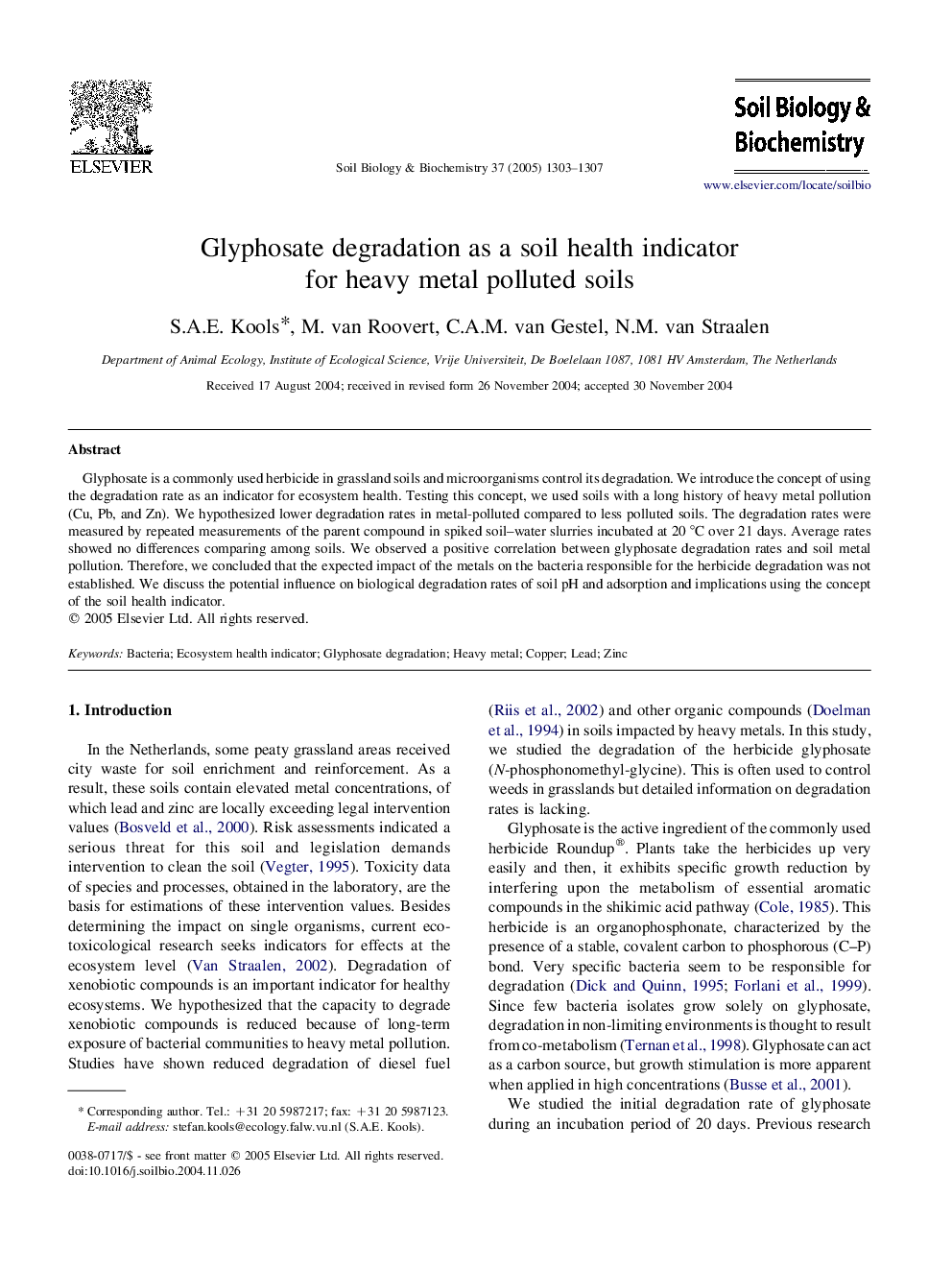| Article ID | Journal | Published Year | Pages | File Type |
|---|---|---|---|---|
| 10846151 | Soil Biology and Biochemistry | 2005 | 5 Pages |
Abstract
Glyphosate is a commonly used herbicide in grassland soils and microorganisms control its degradation. We introduce the concept of using the degradation rate as an indicator for ecosystem health. Testing this concept, we used soils with a long history of heavy metal pollution (Cu, Pb, and Zn). We hypothesized lower degradation rates in metal-polluted compared to less polluted soils. The degradation rates were measured by repeated measurements of the parent compound in spiked soil-water slurries incubated at 20 °C over 21 days. Average rates showed no differences comparing among soils. We observed a positive correlation between glyphosate degradation rates and soil metal pollution. Therefore, we concluded that the expected impact of the metals on the bacteria responsible for the herbicide degradation was not established. We discuss the potential influence on biological degradation rates of soil pH and adsorption and implications using the concept of the soil health indicator.
Keywords
Related Topics
Life Sciences
Agricultural and Biological Sciences
Soil Science
Authors
S.A.E. Kools, M. van Roovert, C.A.M. van Gestel, N.M. van Straalen,
